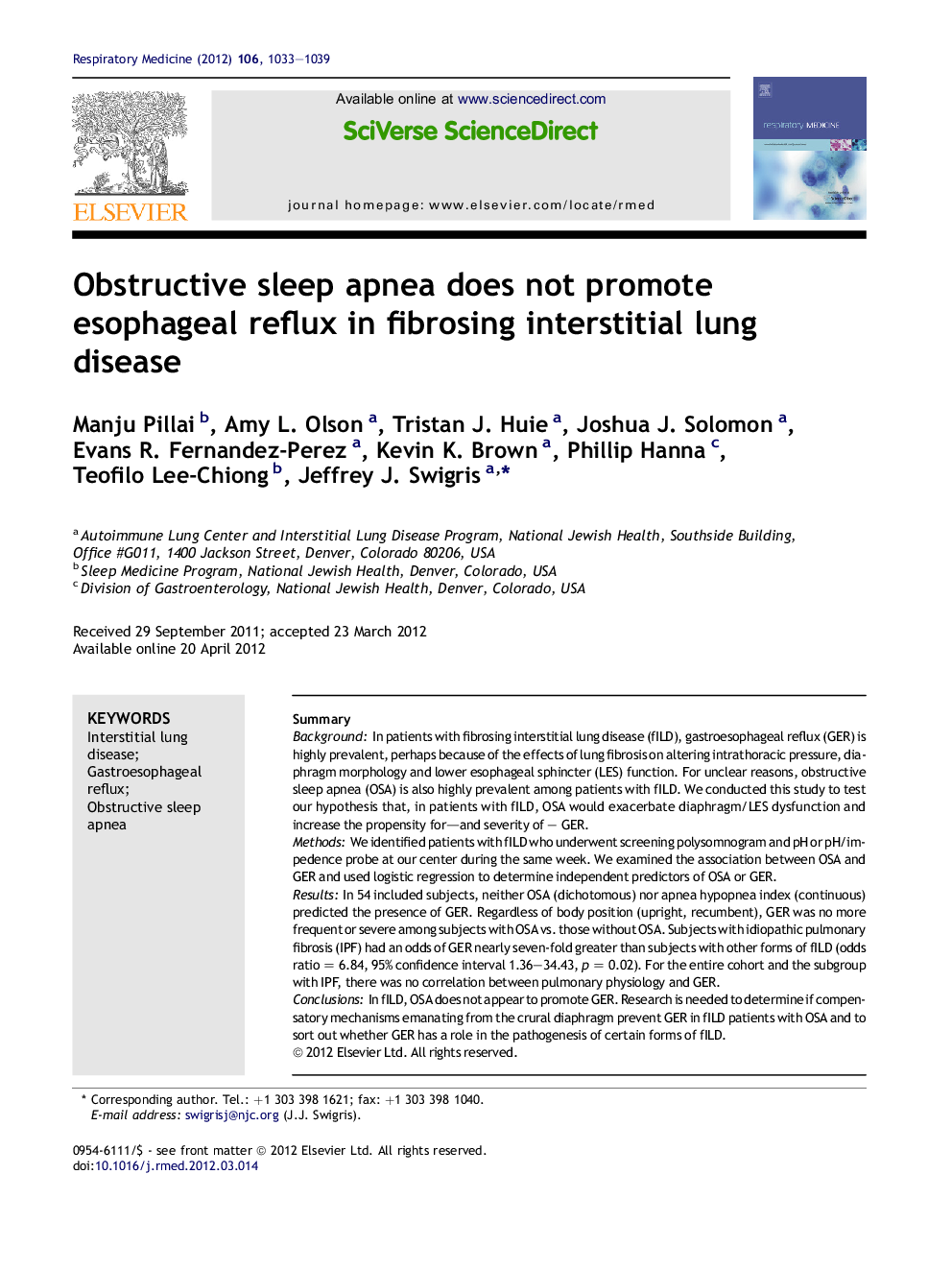| Article ID | Journal | Published Year | Pages | File Type |
|---|---|---|---|---|
| 4210852 | Respiratory Medicine | 2012 | 7 Pages |
SummaryBackgroundIn patients with fibrosing interstitial lung disease (fILD), gastroesophageal reflux (GER) is highly prevalent, perhaps because of the effects of lung fibrosis on altering intrathoracic pressure, diaphragm morphology and lower esophageal sphincter (LES) function. For unclear reasons, obstructive sleep apnea (OSA) is also highly prevalent among patients with fILD. We conducted this study to test our hypothesis that, in patients with fILD, OSA would exacerbate diaphragm/LES dysfunction and increase the propensity for—and severity of – GER.MethodsWe identified patients with fILD who underwent screening polysomnogram and pH or pH/impedence probe at our center during the same week. We examined the association between OSA and GER and used logistic regression to determine independent predictors of OSA or GER.ResultsIn 54 included subjects, neither OSA (dichotomous) nor apnea hypopnea index (continuous) predicted the presence of GER. Regardless of body position (upright, recumbent), GER was no more frequent or severe among subjects with OSA vs. those without OSA. Subjects with idiopathic pulmonary fibrosis (IPF) had an odds of GER nearly seven-fold greater than subjects with other forms of fILD (odds ratio = 6.84, 95% confidence interval 1.36–34.43, p = 0.02). For the entire cohort and the subgroup with IPF, there was no correlation between pulmonary physiology and GER.ConclusionsIn fILD, OSA does not appear to promote GER. Research is needed to determine if compensatory mechanisms emanating from the crural diaphragm prevent GER in fILD patients with OSA and to sort out whether GER has a role in the pathogenesis of certain forms of fILD.
